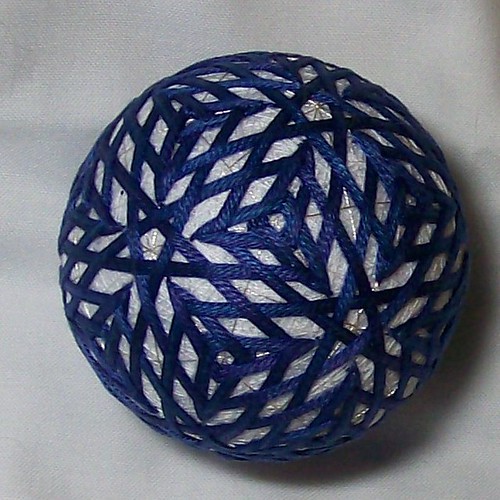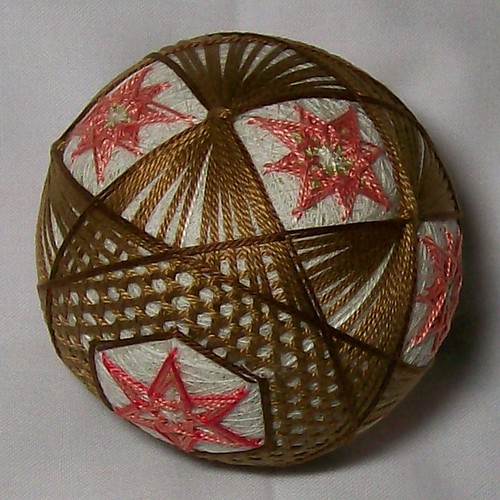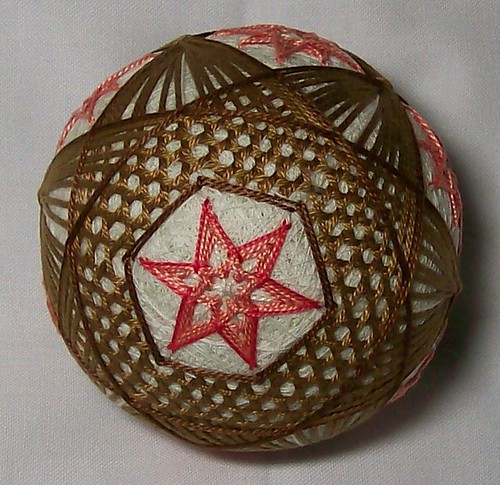I found this pattern on Debi's TemariMath website and though it would fit the theme really well. The shape fit the star theme, and the colors reflected the night sky and the river that separated the married lovers.

You cannot tell by looking at the finished product, but this temari is 20 triangles and 20 tri-wing patterns. I really love the patterns where you weave in and out, so this was very enjoyable to stitch. On the first outline of each triangle you had to concentrate very hard and get the "overs and unders" right, then the next three strands you could coast. Then it would be time for another first outline and more concentrating. The rhythm really fit my way of stitching.
I used almost a full skein of the two colors I used, a dark blue solid and a DMC color variation. Since the colors were so close I wasn't sure if they would show up, but when I made a mistake I could tell right away. The colors are not showing up very well on this picture, but there is violet, blue, and purple. The variegation really adds depth to the design.
This is the temari I finished last week and could not show; but now Karen got it. She likes it!







